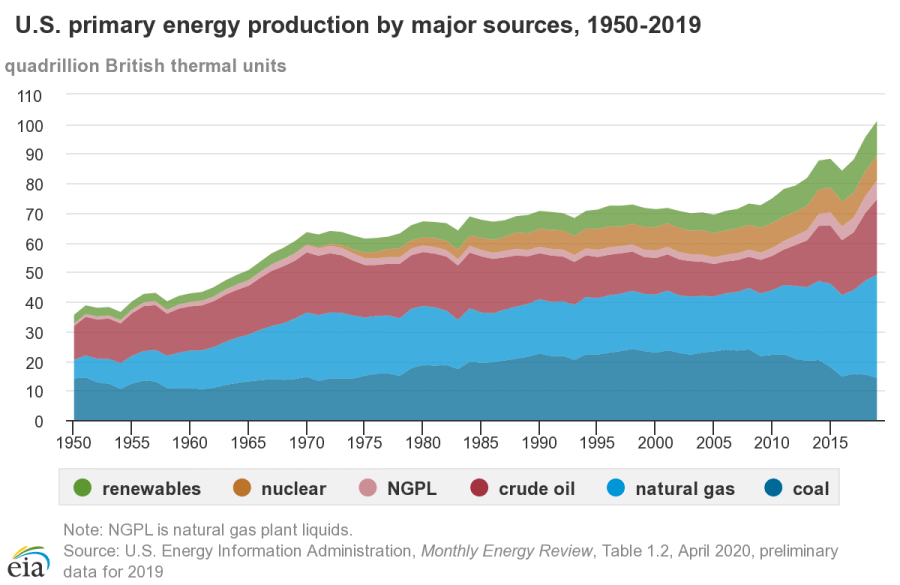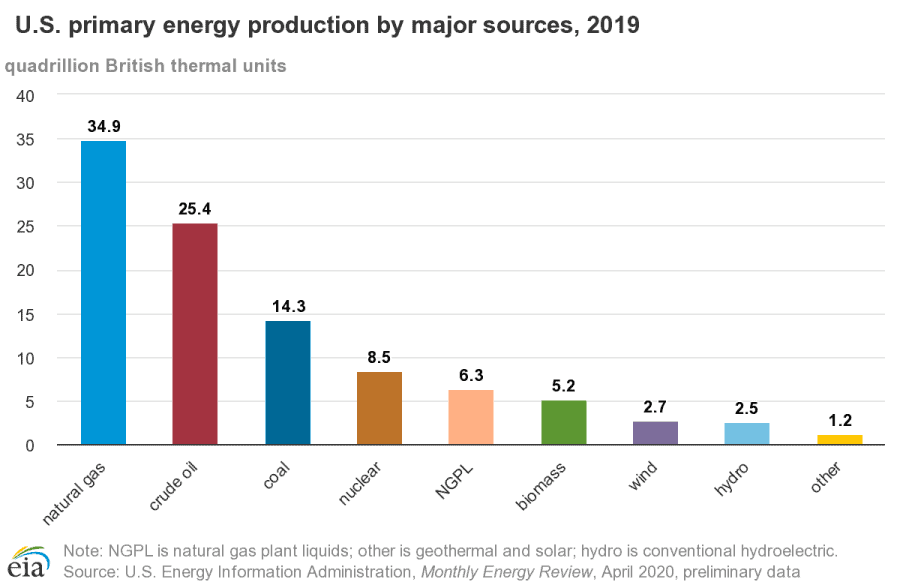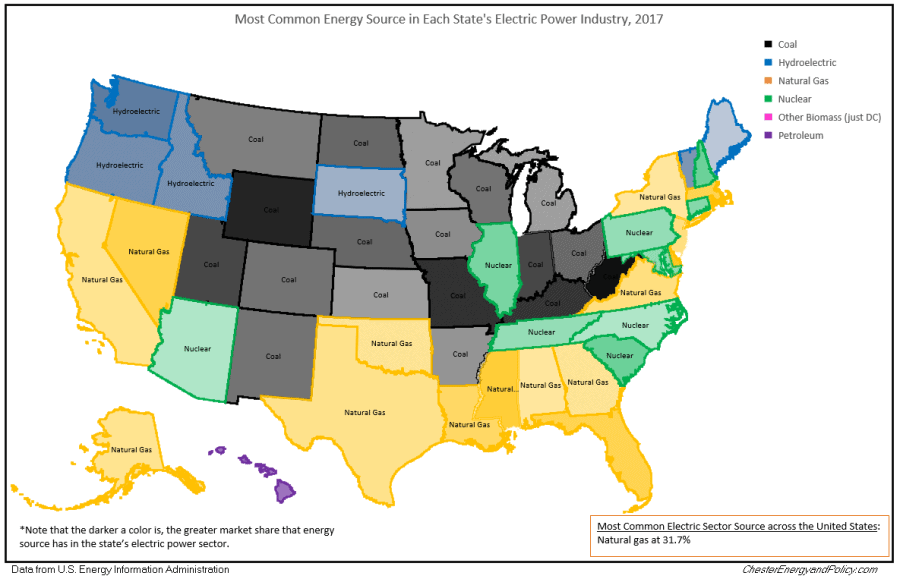Tesla Charging Stations, officially know as Tesla Supercharging are the fast charging systems that offer the fastest charging to a Tesla. A question that frequently comes up regarding Tesla Superchargers is where the electricity comes from. Often, it is curiosity of how “clean” the energy really is.
Most Tesla Supercharging stations get their electricity from the grid. This means it is supplied by local energy companies. Likely, the same one that is providing power to the nearby businesses in the area (and possibly your own home). This energy may be generated by hydro, natural gas, solar, wind, nuclear, or coal, among others. It may also be generated by a combination of more than one source. Many utility companies produce their energy from multiple sources. Per the U.S. Energy Information Administration, in 2019, most of the electricity in the United States was generated by natural gas, coal, and nuclear energy. Tesla Superchargers supply 480 volts of direct current (DC) electricity.
What About Solar Tesla Charging Stations?
Some Tesla Superchargers have a solar panel canopy overhead. This may help offset some of the energy usage, but is it enough to supply the needed power for an entire station? Back in 2017, Elon Musk posted this Tweet:
All Superchargers are being converted to solar/battery power. Over time, almost all will disconnect from the electricity grid.
— Elon Musk (@elonmusk) June 9, 2017
Tesla is constantly working on expanding their Supercharger network. They are frequently adding new sites around the globe. Tesla is also expanding popular stations. Expansion of the network allows additional routes for vehicles to travel. It’s becoming easier and easier to get to remote destinations, even compared to just a year or two ago.
In the following sections, we’ll take a deeper dive into how Tesla Supercharger Stations are powered in the U.S. With most of the Superchargers currently reliant on the grid, we’ll look at some of these numbers.
Why Does it Matter?
Often it is based on how “clean” the energy is, and thus how “green” Tesla’s really are. Some skeptics may claim they’re being powered by coal or other dirty energy, and in some areas, they very well could be depending on where you live.
Tesla Supercharger Power from the Grid
While some of the power may be offset at some stations that have solar canopies, the majority of electricity that powers most Tesla Supercharging Stations comes from the grid. An electrical grid, also referred to as a power grid, is an interconnected network. It’s used to deliver energy from electric producers to consumers.
U.S. Energy Production
The chart below shows primary energy production in the U.S. by major sources from 1950-2019. Overall energy appears to have increased by nearly 2.5 times. Renewables are not clear, this could include everything from hydro-electricity to bio-diesel. Nuclear and coal have slightly reduced in recent years. Population increases with more electronic devices have both contributed to greater energy demands. Local utility companies in our area have offered incentives for electric vehicles owners. They also want to monitor the impact EV’s will have on the grid for years to come.

Here’s a chart on US energy production and use.

ChesterEnergyandPolicy.com is a website that provides insights and analytics on energy and the policies around it. Here, they’ve created a visual map highlighting primary energy source for each state. The darker the color, the greater the percentage of use for that energy source in that state.

Here’s a video of the Tesla Supercharging station with solar canopy installed in Las Vegas near Caesar’s Palace.
Tesla Superchargers Completely Off-Grid?
Despite rolling blackouts in California (and other areas) at times, Tesla has a goal of clean power without backouts 24 hours a day, 7 days a week. For Tesla achieve this, they will have to be independent from the grid.
Also adding Tesla Solar to our Supercharger stations as fast as possible. Goal is 24/7 clean power with no blackouts.
— Elon Musk (@elonmusk) October 10, 2019
If you didn’t already know, Tesla bought a company called Solar City back in 2016. This purchase is essentially the division of Tesla Energy as we know it today. It’s potentially an even larger growth potential for Tesla than electric vehicles. They already have solar panels, solar roofs, and PowerWalls that are apart of their residential lineup. But they also have MegaPacks, Microgrids, and other commercial applications.


I haven’t seen a Tesla Supercharger with a solar canopy in person yet. It will be interesting to see how fast they may actually roll these out. Will they be in all geographic locations or only those that have more solar efficiency (less cloud cover and rain throughout an average year).
There are, however, some new technology breakthroughs that could be on the horizon. This article by Science Alert discusses how new technology could allow solar panels to produce a quarter of the energy at night that the panels generate during the day. It would have to be under optimum conditions, but it’s impressive to think that solar energy could be produced at night. Thermoradiative cells is the key to this technology. Amazingly, solar technology not only has improved over the last several years, but also (for the most part) has seen lower prices.
How Many Tesla Supercharging Stations are There?
Regarding the number of Supercharger stations, an article by Forbes indicates there were approximately 1,200 stations in Q1 of 2018. By Q2 of 2020, there were 2,035.
On this Tesla page, you can search (and sort) through a map to find Tesla Supercharger locations, Tesla Service Centers, and Destination Chargers. Superchargers expected to open soon display a grey icon. Just don’t confuse it for the Destination Charging icon (or filter that option off). Click on one of these and it will give additional information.

Conclusion
While the majority of Tesla Superchargers are currently powered by the grid, that could very well change in the years to come. Tesla seems focused on shifting to renewable energy to power their stations. This includes building new ones from scratch, but also converting and expanding existing ones. As their energy products division continues to grow, it’s likely to see more innovation. There’s already been talk of Tesla being able to set up their own grids. They may not be that far from it in certain areas.
More Tesla Posts on Fabville!
Looking for more Tesla articles? Check out more of our Tesla posts.
If you’re looking to purchase a new Tesla vehicle or Tesla Energy product, please consider using my referral code (link to Tesla with my code): https://ts.la/kevin82163

